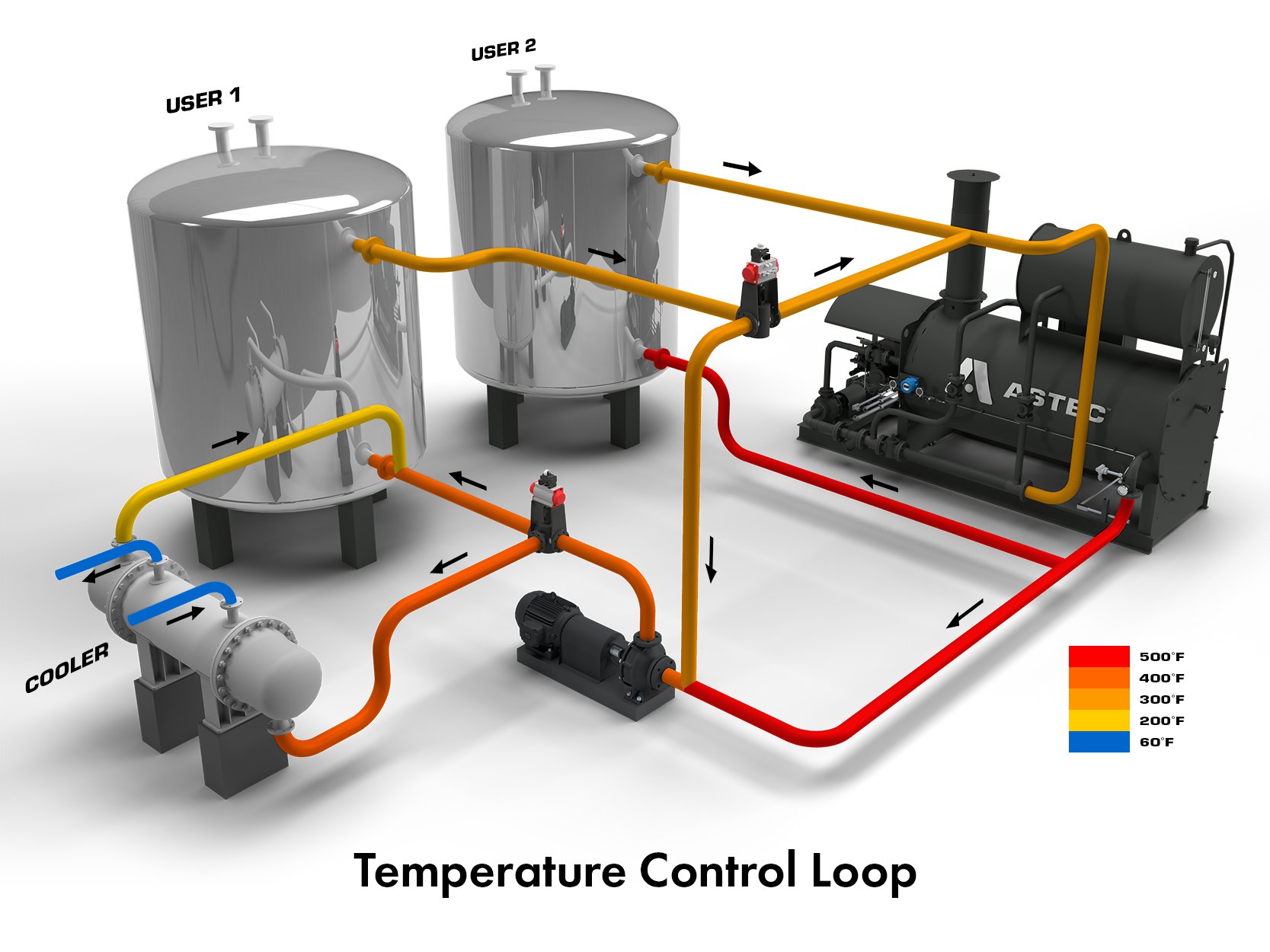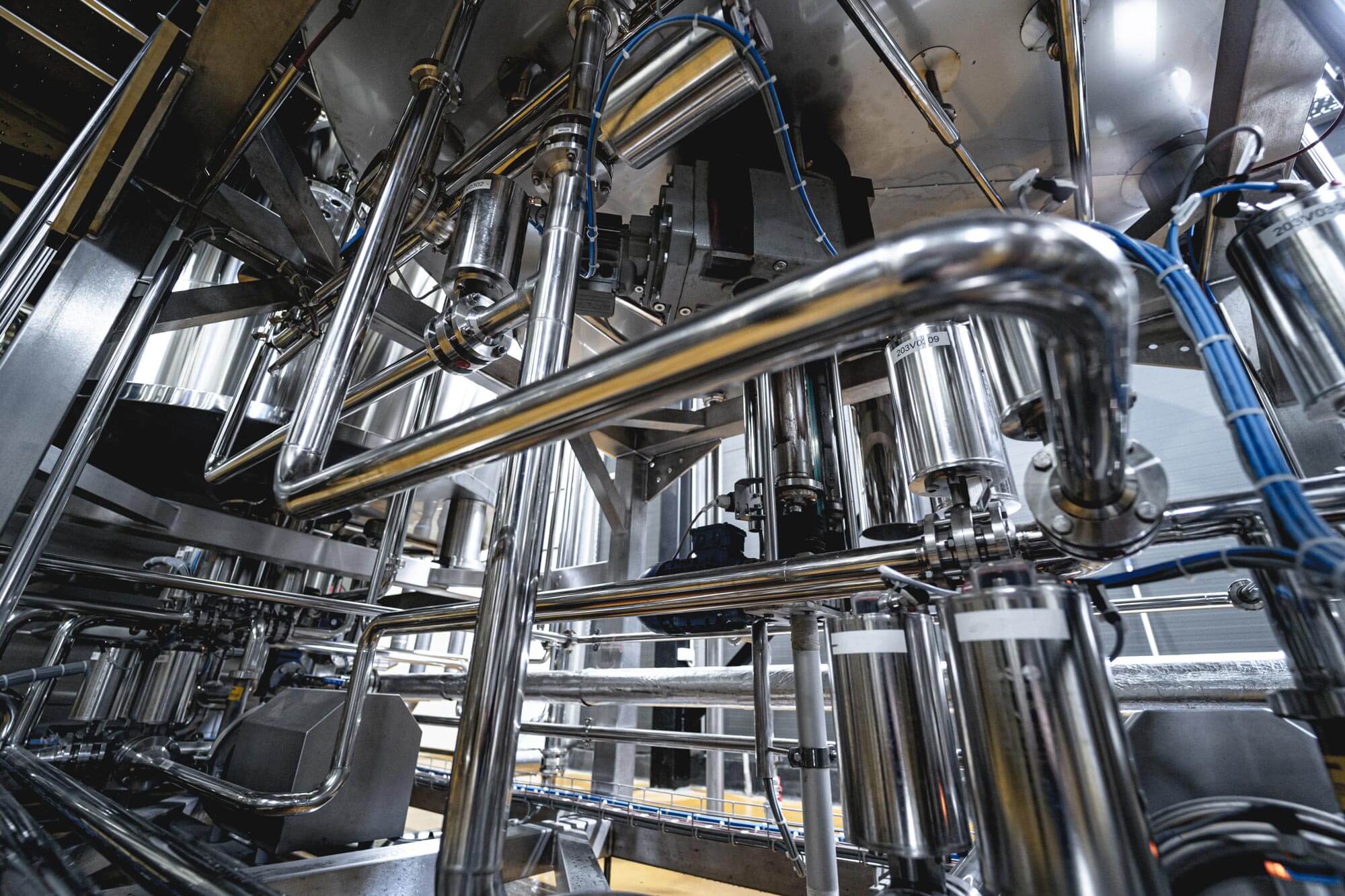Leveraging Machine Learning in DVS Heat Transfer Systems for Smarter Heat Regulation
Wiki Article
A Comprehensive Overview to Choosing the Right Heat Transfer Equipments for Your Requirements
Selecting the ideal Heat transfer system is necessary for functional performance. Various systems accommodate different needs, affected by elements such as temperature level range and fluid kind. Comprehending the concepts behind Heat transfer, such as conduction, convection, and radiation, is crucial. Furthermore, reviewing power sources and upkeep practices can influence long-lasting efficiency. A closer examination of these considerations discloses just how to customize a system to details needs. What should one prioritize in this complicated decision-making process?Recognizing Heat Transfer: Secret Ideas and Concepts
Although Heat transfer might look like a straightforward idea, it incorporates a variety of concepts that are basic for effective system style. Comprehending these concepts is crucial for engineers and developers that intend to optimize thermal efficiency in numerous applications. Transmission, as an example, includes the transfer of Heat with solid materials, while convection describes the movement of Heat within liquids. Radiation, an additional crucial concept, describes exactly how Heat can be transferred through electro-magnetic waves. Each of these systems plays a crucial function in figuring out just how energy relocates within a system. By thoroughly comprehending these principles, specialists can make educated decisions, making sure that Heat transfer systems operate successfully and fulfill the specific demands of their applications
Kinds Of Heat Transfer Systems: An Introduction
Understanding the concepts of Heat transfer lays the groundwork for discovering the different sorts of Heat transfer systems offered. Heat transfer systems can be classified mostly into three kinds: radiation, convection, and conduction. Transmission includes Heat transfer with strong materials, counting on direct call between bits. Convection, on the other hand, happens in fluids (gases and liquids) where the activity of the liquid itself facilitates Heat transfer. Radiation entails the transfer of Heat via electro-magnetic waves and does not require a tool, permitting it to take place in a vacuum. Each kind of system has unique attributes and applications, making it essential for individuals and organizations to carefully examine their particular requirements when choosing one of the most appropriate Heat transfer remedy.Applications of Heat Transfer Equipments in Various Industries
Heat transfer systems play a necessary role throughout various industries, influencing effectiveness and product high quality. In commercial production procedures, they assist in specific temperature level control, while in food and drink handling, they guarantee safety and security and preservation. In addition, a/c and environment control systems depend heavily on efficient Heat transfer to keep comfy environments.Industrial Manufacturing Processes

Countless commercial production procedures depend heavily on effective Heat transfer systems to make best use of productivity and enhance product top quality. In markets such as metalworking, Heat exchangers play an essential function in preserving suitable temperature levels throughout welding, casting, and forging. These systems guarantee uniform Heat circulation, which is important for attaining wanted material homes. In the chemical production sector, Heat transfer systems help with specific temperature level control throughout reactions, affecting return and safety. Furthermore, in fabric production, reliable Heat administration is very important for coloring and completing processes, influencing color uniformity and fabric high quality. By picking proper Heat transfer innovations, makers can boost energy effectiveness and minimize operational expenses, eventually bring about a much more sustainable and affordable production environment.
Food and Beverage Processing
Efficient Heat transfer systems are equally essential in the food and drink handling industry, where maintaining ideal temperature levels is vital for food security and high quality. These systems play a vital duty in procedures such as sterilization, pasteurization, and food preparation, making certain that products are secure for usage and keep their dietary value. Heat exchangers, as an example, successfully move Heat in between fluids, maximizing energy usage while decreasing temperature variations. Furthermore, refrigeration systems are essential for maintaining perishable products and expanding life span. The choice of Heat transfer innovation directly affects operational performance and product stability, making it important for food and drink suppliers to pick the suitable systems customized to their specific processing demands. This cautious option eventually adds to customer complete satisfaction and food safety and security.
Heating And Cooling and Climate Control
While lots of industries depend on Heat transfer systems for efficiency, HEATING AND COOLING (Heating, Ventilation, and A/c) plays an important function in preserving indoor climate control throughout different settings. These systems make use of Heat transfer concepts to regulate air, temperature level, and moisture high quality, ensuring convenience and safety and security in residential, business, and commercial settings. Correctly designed a/c systems boost power efficiency, minimize functional costs, and lessen environmental influence. In business buildings, as an example, reliable environment control adds to staff member performance and customer complete satisfaction. In commercial applications, cooling and heating systems help preserve suitable conditions for devices operation and item conservation. Selecting the right Heat transfer system is vital for meeting particular climate control requirements and attaining overall system performance.Evaluating Energy Resources for Heat Transfer Solutions
In assessing energy resources for Heat transfer systems, a contrast of sustainable energy choices and fossil gas considerations is crucial. Sustainable resources, such as solar and wind, offer lasting choices that can lower environmental effect. Alternatively, nonrenewable fuel sources continue to be prevalent because of their recognized facilities and energy thickness, triggering a cautious analysis of both choices.Renewable Resource Options

Nonrenewable Fuel Source Factors To Consider
Examining fossil fuel factors to consider is necessary for the effectiveness and sustainability of Heat transfer systems. Fossil gas, such as gas, oil, and coal, are typical energy resources that provide significant Heat outcome, making them popular selections for residential and industrial applications. Their environmental impact, consisting of greenhouse gas emissions and resource depletion, raises problems. When selecting a warm transfer system, it is essential to analyze the schedule, expense, and governing aspects related to these gas. Additionally, the efficiency of nonrenewable fuel source systems need to be considered, as higher effectiveness can minimize some ecological disadvantages. Eventually, a balanced technique weighing performance and sustainability can guide decision-makers towards one of the most proper Heat transfer option for their details demands.Variables to Consider When Selecting a Warmth Transfer System
Choosing a suitable Heat transfer system calls for careful consideration of different elements that can significantly impact effectiveness and performance. One crucial element is the operating temperature level array, which determines the materials and layout ideal for the application. Furthermore, the sort of liquid used in the system-- whether gas or fluid-- impacts Heat transfer performance and compatibility. The system's size and capacity need to line up with the particular needs of the operation to stay clear of inefficiencies. Power resource availability is also necessary, affecting operating expense and sustainability. The installation setting, including space restrictions and access for upkeep, plays a substantial function in system choice. Governing conformity and safety criteria must be considered to assure the system fulfills all lawful demands.Upkeep and Performance Optimization for Heat Transfer Equipments
Maintaining Heat transfer systems is necessary for making certain optimal effectiveness and longevity. Regular maintenance activities, such as cleaning up Heat exchangers and checking insulation, assistance protect against effectiveness losses because of fouling and thermal linking. In addition, keeping track of system specifications, consisting of stress and temperature, enables early detection of abnormalities, reducing downtime and pricey repairs. Executing a preventive maintenance timetable can enhance performance and extend the lifespan of elements. Furthermore, upgrading to innovative control systems can enhance functional efficiency by adapting to varying problems and lots. By prioritizing upkeep and effectiveness optimization, operators can attain minimized energy intake, lower operational expenses, and boosted total system integrity, ultimately causing far better source usage and an extra lasting operation.Future Trends in Heat Transfer Technologies
As sectors increasingly focus on sustainability and power performance, future fads in Heat transfer technologies are established to undertake considerable transformations. Innovations such as advanced products, including carbon nanotubes and nanofluids, guarantee enhanced thermal conductivity and effectiveness. Furthermore, the combination of renewable resource resources into Heat transfer systems is acquiring momentum, advertising eco-friendly options. Smart technologies, consisting of IoT sensors, are expected to transform monitoring and control, enabling real-time data analysis for optimized performance. The advancement of portable and modular systems will certainly facilitate less complicated setup and maintenance, providing to diverse applications. These improvements suggest a change in the direction of more lasting, efficient, and adaptable Heat transfer remedies, lining up with global power objectives and environmental standards.
Frequently Asked Questions
What Are the Environmental Effects of Heat Transfer Systems?
The environmental influences of Heat transfer systems can consist of greenhouse gas emissions, power usage, and potential thermal pollution. Additionally, inappropriate disposal of inefficiencies and materials can contribute to resource depletion and environment disturbance.Just how Do I Compute the Cost-Effectiveness of a Heat Transfer System?
To calculate the cost-effectiveness of a heat transfer system, one must evaluate first expenses, functional expenditures, upkeep requirements, and energy efficiency, comparing these aspects versus the anticipated life-span and DVS Heat Transfer Systems performance of the system.Can Heat Transfer Equipment Be Utilized in Residential Settings?
Heat transfer systems can certainly be made use of in domestic settings. They provide effective heating and cooling down solutions, making homes more comfy while potentially reducing power costs. Their adaptability enables numerous applications in domestic environments.What Safety And Security Rules Put On Heat Transfer Systems?
Safety and security laws for Heat transfer systems usually include standards on procedure, upkeep, and installation. Conformity with regional building regulations, supplier requirements, and sector criteria is vital to assure risk-free and reliable system performance in different applications.Just How Do Various Products Affect Heat Transfer Efficiency?

Transmission, for circumstances, includes the transfer of Heat via strong materials, while convection refers to the motion of Heat within fluids. Comprehending the principles of Heat transfer lays the foundation for exploring the various kinds of Heat transfer systems readily available. Heat exchangers, for circumstances, effectively move Heat in between fluids, enhancing power use while decreasing temperature level variations. In evaluating power sources for Heat transfer systems, a comparison of eco-friendly energy options and fossil fuel considerations is crucial. Metals, such as copper and light weight aluminum, conduct Heat properly, whereas insulators like rubber and glass reduce down Heat circulation.
Report this wiki page